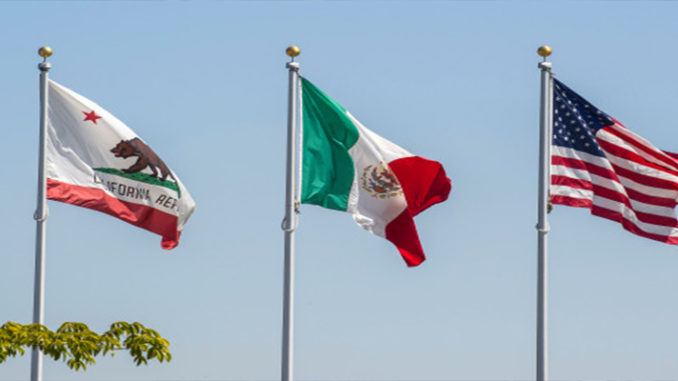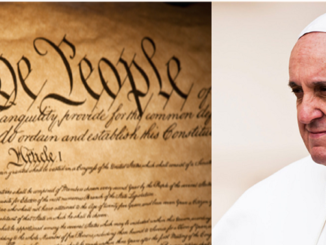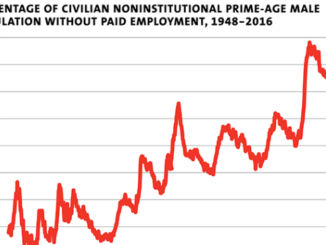
by Gregory Rodriguez
Homogenizing the image of the “other” has always been a way for groups to marginalize undesirable minorities and foreigners. Two dozen centuries ago, Hippocrates wrote that the Scythians — nomadic people whom the Greeks considered barbaric — all looked alike. By contrast, the good doctor could discern that his own people came in all shapes and sizes.
To refuse to make distinctions among members of any given group is the first step to stripping them of individuality. And depriving people of individuality is the first step to dehumanizing them. You know the drill: All Jews are alike. Black people are all this. White people are all that.
Last week, David Hiller, the new publisher of The Times, wrote a memo to his staff in which he expressed his belief that the newspaper needs to do a better job of reaching the readers he called “Hispanics” and the Times prefers to call “Latinos.” A flap ensued over which word was better suited to the task. Yet if the paper really wants to reach “Hispanics” or “Latinos,” what it must do is stop overusing such generic terms and instead concentrate on discerning the distinctions they cover up.
Consider this: Two-thirds of U.S. Latinos are of Mexican origin. In California, that figure rises to 83%. It is odd then that over the last three decades, as the Mexican presence in the United States has grown astronomically, the term “Mexican American” has all but disappeared in daily journalism, especially in The Times.
My concern is not a matter of ethnic pride. The use of the catchall term undermines the accuracy of stories. A few years ago, a Times editorial referred to tacos as a “Latino favorite,” which is a little like saying pasta is a “European favorite.” It’s not untrue, but it makes you look silly.
Likewise, a Los Angeles Times magazine story in the aftermath of the Kobe Bryant rape accusation referred to Bryant’s wife, Vanessa, as “Latina,” and nothing more. That tells me next to nothing about Mrs. Bryant. Does it mean she was born in Nicaragua or Uruguay? Or that her parents are from rural Mexico? Or maybe that she is the granddaughter of a Dominican plantation owner? There is no nation of Latinoland, and if her heritage is important to the story, then why not connect her (or her family) to a country with a unique culture and tradition.
It’s not just national origin that the term “Latino” masks. Times’ reporters will refer to downtown Huntington Park, a heavily Mexican immigrant city, as a “Latino shopping district.” Montebello, a town heavily populated by U.S.-born Mexican Americans, is also usually identified as “mostly Latino.” By referring to both as Latino, journalists ignore critical distinctions between foreign and U.S.-born ethnic Mexicans.
I’m not arguing to get rid of the terms “Latino” or “Hispanic.” There are many instances when the catchall ID applies. Nor am I arguing that a pan-Latino identity does not exist. It does. But being Latino is a secondary — and oftentimes flimsy — identity in the same way that being European is. Just as Frenchmen and Poles will tell you that they are French and Polish before they are Europeans, Cuban Americans and Salvadoran Americans tend to adhere to national-origin identity more strongly than to the generic one.
Not surprisingly, the generic terms are the products of politics. They gained currency in the 1970s as Mexican Americans in the Southwest decided to make common cause with Puerto Ricans in the Northeast, and they needed terms that bridged regional and cultural distinctions. The advent of race-based policies and set-asides encouraged Latino subgroups to forge a common front to position themselves to receive federal largesse.
Old-fashioned partisan politics also played a role. The Nixon administration first pushed for a recognition of a “Spanish-speaking” identity group, as the GOP actively sought a strategy to lure Mexican American voters. President Nixon also insisted on the addition of a Hispanic-origin question on the census form.
Historian John D. Skrentny discovered a 1971 White House memo that points to the administration’s ulterior motive: “Spanish-speaking Americans will take what they can get from whomever will give it . We should exploit Spanish-speaking hostility to blacks by reminding Spanish groups of the Democrats’ commitment to blacks at their expense.”
But to do this, the government had to throw Mexican Americans into a single, overarching category that could be understood as analogous to blacks. In 1980, federal census demographers discovered that other than a handful of political elites who understood the advantages of becoming Latino, few Americans of Latin American origin wanted a collective name that suggested a collective identity. But a generation of the government and the media using the generic terms has changed all that.
Today, “Latino” and “Hispanic” have way too much popular currency, and their overuse does nothing to give us a greater understanding of our city, state or nation. The terms are too broad to give us an accurate portrayal of the dynamism of this vast and growing population. My modest proposal to employ more specific descriptions is no panacea for this newspaper’s outreach problems, but it could be a start. At least it’d make it more reflective of the complex ethnic reality of Los Angeles.
Gregory Rodriguez, founder and executive director of Zócalo Public Square in Los Angeles, is a senior fellow at the New America Foundation and founding director of the Center for Social Cohesion at Arizona State University. He has written widely on issues of social cohesion, civic engagement, national identity, assimilation, race relations, religion, immigration, ethnicity, demographics and social and political trends in such publications as the New York Times, the Wall Street Journal, the Economist, Time and Newsweek. The author of Mongrels, Bastards, Orphans and Vagabonds: Mexican Immigration and the Future of Race in America (Pantheon).



